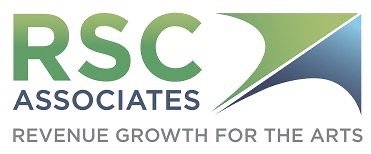THE BOARD MEMBER’S FUNDRAISING TOOLBOX
With Bob Swaney
Whether you’re a Board member wondering, “What exactly am I supposed to do in fundraising?” or an executive leader struggling to equip your Board for successful fundraising, today’s podcast is for you. We’re going to unpack the Board Member’s Fundraising Toolbox—what you MUST have, what you’ll eventually NEED to have, and what you’d LIKE to have but can probably do without.
Listen for insights on common misconceptions about Board involvement in fundraising, the components of developing donor relationships, and the most important tools for successful fundraising.
Read the full transcript below or click the button to listen.
Today, we’re talking about getting Board members fully engaged in the fundraising process. I touch on this from time to time, but since it’s a recurring priority for nearly all of RSC’s clients, AND because it should be a priority for all arts and cultural organizations, it’s worth revisiting.
Why Board Members Should Be Involved in Fundraising
If you’re a Board member wondering, “What exactly am I supposed to do in fundraising?” or an executive leader struggling to equip your Board for successful fundraising, this post is for you. Today, we’re going to unpack the Board Member’s Fundraising Toolbox—what you MUST have, what you’ll eventually NEED to have, and what you’d LIKE to have but can probably do without.
First, let’s clear up a common misconception: fundraising is NOT just about asking for money. It’s a process, a cycle that includes identification, cultivation, solicitation, and stewardship. And Board members play a CRITICAL role in that cycle.
Board members have relationships and influence that staff doesn’t have, and these relationships become invaluable as the need for contributed support grows in the arts. But fear not—as I have said many times, every Board member should be involved in the process of fundraising, but not necessarily the act of fundraising. So, if you are a Board member who doesn’t like to ask for contributions, take a sigh of relief and keep listening.
There are four main components to developing a donor relationship. I’ll name and define them briefly:
1) Identification
Board members have relationships and networks that the staff simply don’t have access to. Your personal and professional circles are goldmines for potential donors who love the arts but who haven’t yet made a meaningful gift. Your role? Help identify and introduce these folks.
2) Cultivation
Once a potential donor is on our radar, they need to be engaged. This means inviting them to performances or exhibits, meeting them at events, introducing them to leadership, and—most importantly—helping them feel personally connected to the organization.
3) Solicitation
Now, not every Board member needs to be the one making the direct ask. But you can be part of the conversation. Sometimes, your presence alone gives a donor the confidence to say yes. Other times, your personal testimonial about why you serve on the Board and why you give generously can be the most persuasive influence in the room.
4) Stewardship
If you think fundraising ends when the check clears, think again! You have to get, keep, and upgrade donors over the long haul, and appreciating and stewarding donors is absolutely core to advancement. Stewardship—thanking and keeping donors engaged—is arguably the most important part of fundraising. Board members are fantastic at this. A handwritten note, a personal call, a casual conversation at intermission—it all helps donors feel valued and, hopefully, eager to give again.
So, if you ever find yourself saying, “Fundraising isn’t really my thing,” let me stop you right there. If you care about your organization, believe in its mission, and have relationships, fundraising is absolutely your thing.
Let’s Look at the Board Member’s Fundraising Toolbox
Alright, now that we’re all on the same page about the donor relationship and the Board’s role, let’s break down the toolbox into three tiers: Must Have, Eventually Need to Have, and Nice to Have but Often Unnecessary.
Must-Have Tools: The Non-Negotiables
As a Board member becoming involved in fundraising, what MUST you have? Here are a few thoughts:
1) A Clear Understanding of the Organization’s Mission and Case for Support
You should be able to answer, in your own words, why your organization matters and why it deserves funding. The litmus test is this: Once you can make that case to a friend over coffee, you’re ready to engage donors.
2) A List of Your Own Contacts Who Could Become Donors
This doesn’t mean handing over your address book to the development team. But you should be thinking about who in your network has an interest in the arts and a capacity to give.
3) A Commitment to Personally Give
If you’re on the Board, you should be contributing. Period. Not give or get…GIVE! It doesn’t have to be the biggest gift in the room, but it does need to be meaningful for you. If you are generous, you are qualified to ask others to join you in being generous.
4) A Willingness to Attend and Engage at Events
Fundraising happens in relationships, and relationships happen in person. You can’t just show up at Board meetings—you need to be visible and active in the organization’s community. Performances, exhibition openings, events…and all those places where the organization’s patrons engage.
5) A Basic Understanding of How Fundraising Works
No, you don’t need to be a professional fundraiser, but you should understand that major gifts don’t happen overnight or in a vacuum. It’s a process, and your role is to help move donors through that process.
Next comes “need to have.”
Eventually Need to Have: Next-Level Tools
Once you’re comfortable with the basics and the must-haves, here’s what you’ll need to develop next:
1) An Ability to Tell Your Own “Why” Story
Donors don’t just give to organizations; they give to people who inspire them. Your personal connection to the organization is one of the most powerful tools you have.
2) Experience in Donor Conversations
At some point, you’ll be in a room with a donor and need to articulate why their support matters. Practicing these conversations makes a huge difference.
3) Familiarity with the Organization’s Key Funding Priorities
You don’t need to memorize every budget line, but you should have a clear sense of what funding priorities are most urgent.
4) A Basic Understanding of Planned Giving and Endowments
This isn’t a day-one necessity, but eventually, you’ll want to know how legacy gifts work within your arts organization, and how to talk about them, conversationally, with donors.
5) A Willingness to Participate in a Solicitation Meeting
Again, you don’t have to be the one making the ask, but sitting alongside staff or another Board member can be a game-changer.
Okay, we’ve covered the “must-haves” and the “need-to-haves.” Let’s next cover a few of the “Nice-to-Have” tools, but ones that I rarely consider as “make or break.”
Nice to Have, But Often Unnecessary
1) Deep Knowledge of Fundraising Jargon
You don’t need to sound like a development director. Speak from the heart, not from a textbook.
2) A Perfect Elevator Pitch
Sure, it’s good to be able to summarize your organization quickly, but real fundraising happens in deeper conversations, not one-sided, rehearsed speeches.
3) Every Biographical and Financial Scrap of Information Regarding Your Prospects
Of course, you want to be prepared by knowing something about your prospect, but oftentimes, volunteers will have analysis paralysis, blocking themselves from making the ask until they know “just one more thing”.
Final Thoughts
That’s what we have time for today to build your Board Member’s Fundraising Toolbox, and we’re really just skimming the surface. If you’re a Board member, take an honest look at what tools you have and where you need to grow. If you’re leading a Board, ask yourself if you’re providing your members with the right tools to succeed.
And if you remember just one thing, make it this…
Fundraising is not just about asking for money—it’s about building relationships that inspire investment in something meaningful, like your arts organization! Board members who commit to actively participating in this process make an enormous impact. Show up, engage, and share your passion, and you’ll help secure the resources your organization needs to thrive.



